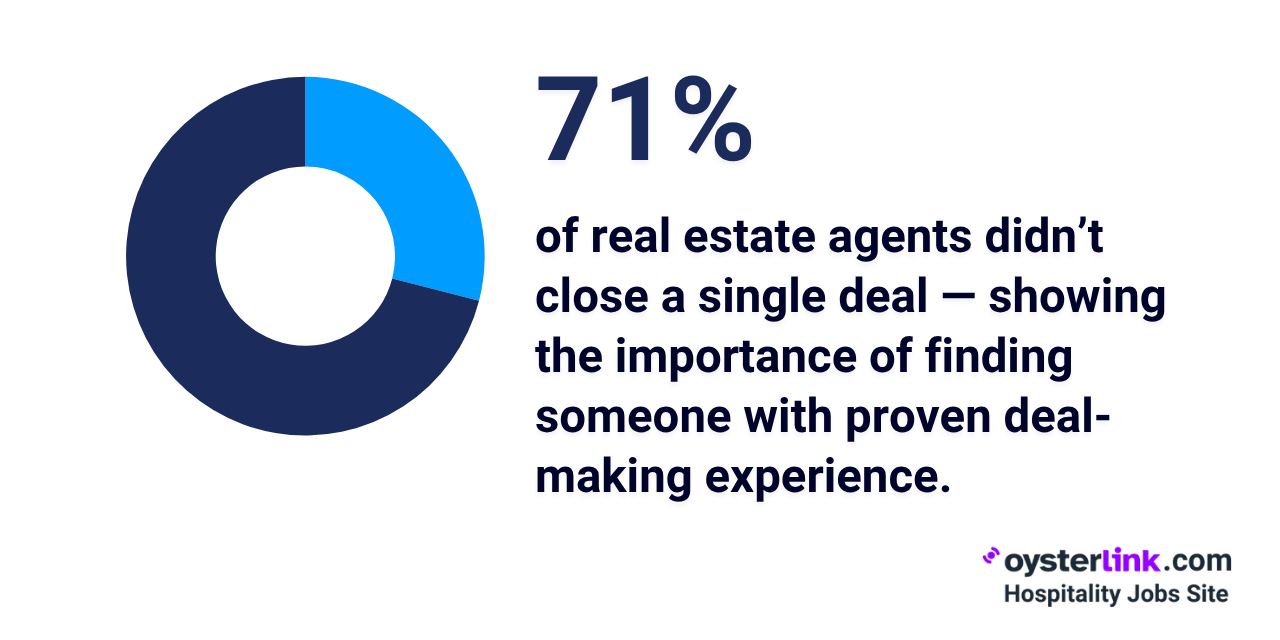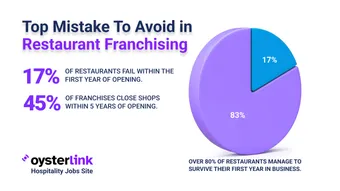Leasing a restaurant space is one of the most important decisions you’ll make as a restaurant owner. Once you pick a location, there's really no turning back.
Below is a step-by-step guide on how to lease a restaurant space and avoid making six-figure mistakes.
Step-by-Step Process for Restaurant Owners
Leasing a restaurant space means much more than finding a location you like. From planning to legal review, each step can lead to setbacks and costly surprises if not executed correctly.
Leasing a Restaurant Space: First Step Is Assessing Needs
Start by defining your restaurant concept and required features. Create a checklist that includes:
- Seating capacity for your concept
- Kitchen/prep size (enough space for fast service and safety)
- Storage space (dry/cold/frozen)
- Private and street parking for guests and staff
- Ventilation/hood systems, ADA compliance, restrooms
Estimate a maximum budget — not just for rent but also buildout (construction and design), equipment, legal fees and contingency savings.
Bring this checklist to every site tour and update it as you learn more.
If you’re new to the process, consider reading the essential steps in the hiring process to help with staffing down the line.
Researching Locations: A Critical Step When Leasing a Restaurant Space
Identify neighborhoods with high foot traffic that fit your target diners. Look for:
- Busy hours and patterns (visit weekends and peak lunch/dinner times)
- Direct competitors and complementary businesses nearby
- Demographics: disposable income, age, interests
You might also want to find the best staff for your restaurant to ensure your business thrives in a competitive market.
Last year we had a chance to talk to Kyle Inserra, a restaurant owner with over 20 years of experience. He had this to share about choosing a location:
You can have a fantastic location with high visibility but pay high rent. Or you can have something off the beaten path with a lower rent and spend more money on marketing.
Do what makes sense. If you are paying more than 10% of your gross sales every year, you are on a death spiral.
Evaluate Each Potential Location Before Choosing
Tour each space in person with your needs checklist. Carefully check for:
- Zoning approval for restaurants
- Past tenant type
- Ventilation, grease traps, fire suppression, kitchen plumbing
- Parking numbers (count it yourself if in doubt)
- Any visible damage/old infrastructure
Review the key restaurant positions and roles you’ll need to support your concept in the space.
Due Diligence Before Signing a Lease Agreement
Order a property inspection by a licensed professional before you sign.
Insist on a report with photos and estimates to fix or replace any issues (e.g., plumbing, electrical, roof, HVAC). Research:
- Current compliance with health, fire and safety codes
- Google the property/company for lawsuits or disputes
- Open permits, unresolved fines or complaints — ask for city records
Just as thorough due diligence is crucial when inspecting a property, ensuring compliance with health, fire, and safety codes is equally important.
After all, 70% of diners are deterred by health code violations when choosing a restaurant.

Lease Negotiations and Useful Tips
Besides the base rent, drill into key sections like:
- Lease length and options to renew
- Rent escalations (exact % increase per year)
- Maintenance/repair responsibilities (HVAC, electrical, roof, plumbing)
- Allowed upgrades — will the landlord pay ("tenant improvements")
- Buildout timelines and what happens if construction is delayed
- Rights to sublet or transfer the lease (“assignment”)
- Clear exit/termination clauses for emergencies
- Exclusivity — protect your concept from direct competitors
Get every commitment in writing. Double-check language with your lawyer so it’s not vague.
Understanding Restaurant Lease Costs
Request and review a full breakdown (ask for this as a printed/email table):
- Base rent per month and per year
- CAM fees ("Common Area Maintenance")
- Insurance premiums (property/liability)
- Deposits (security, last month’s rent, utilities, etc.)
- All utility costs (with recent utility bills if possible)
- “Triple net” charges (if any)
- Expected buildout/improvement costs
- Potential surprise repairs
Create a spreadsheet to tally up all costs — and flag any unclear item for your lawyer or accountant before signing.
For more on tracking and calculating these figures, see ways to fix your restaurant's money problems.
1. Review the lease agreement with professionals
Bring in:
- A restaurant-specialist commercial real estate agent
- A commercial real estate attorney
- An accountant who understands hospitality leases
Ask them to highlight any red flags, unclear sections or risks. Bring your own list of questions — no detail is too small.
2. Obtain necessary permits and licenses
Before you sign, confirm:
- Zoning permits (food service and, if needed, liquor license eligibility)
- Current health/safety code certificates — request copies
- No unresolved city violations
.png)
3. Finalize the lease and plan your buildout
After every issue has been checked, sign the lease and confirm progress in writing:
- All buildout/renovation promises are detailed in writing
- Your timeline for opening (include buffer time for supply or permit delays)
- Photograph and document the “as is” condition of the space
Not sure how to write a job description or what to include for your first job post? Read how to write an effective job description.
How To Lease a Restaurant Space Without Falling Into Traps
Many first-time restaurant owners face huge, unexpected expenses after lease signing — sometimes totaling over $50,000.
Even if you have strict restaurant space requirements, here are some of the top risks to keep in mind (and how to dodge them):
1. Unclear maintenance responsibilities
If your lease doesn’t spell out who pays for major repairs (like HVAC, plumbing or roof), you can get stuck with sudden five-figure bills.
Always demand explicit details in your lease — for every system, who pays and when? Put this on your negotiation checklist.
2. Inadequate infrastructure for restaurant use
Older spaces might not have upgraded kitchen drainage, ventilation or fire suppression. Upgrades like new grease traps, hoods or sprinkler systems can cost well over $20,000 each.
Solution: Bring your inspector and contractor with you and ask for estimates to avoid these traps.
3. Expensive leasehold improvements
If the lease is vague about buildout or the allowance the landlord gives is too low, even minor changes can blow up your budget.
- Get the buildout scope, allowance amount and payment timeline all on paper.
- Ask for recent construction cost histories from the landlord or broker.
.png)
4. Unknown legal and compliance issues
Spaces with old code violations or improper zoning can leave you facing work stoppages or fines.
- Have city records pulled and verify with your agent or lawyer.
- Request proof of legal food service status from the landlord.
For a more detailed perspective on handling compliance, see these Restaurant Manager interview questions that can help you identify leaders who know compliance inside and out.
5. Ambiguous exit or assignment clauses
If your lease restricts leaving or subletting, you could be stuck paying thousands a month after closing.
You need clear, written options for getting out — ask for examples from your agent or lawyer.
Pro Strategies and How To Avoid Pitfalls
Make it a rule: never accept “trust me” or vague promises from brokers, landlords or contractors.
Practical strategies:
1. Work with experienced real estate and legal professionals
Around 71% of real estate agents didn't close a single deal during the previous year.

That said, it's important to choose a real estate agent and attorney who have leased to restaurants and know the “tricks” in these contracts.
Interview them:
- How many restaurant deals have you closed in the last year?
- Can you explain triple net, CAMs and improvement allowances in plain English?
Their answers should be specific and practical. If they dodge, move on.
2. Request detailed, itemized cost breakdowns
Ask for every fee, allowance and scheduled expense in an easy-to-read, itemized table. Compare this to your own spreadsheet and call out any vague numbers.
If you’re scaling operations, be sure to check out best practices for Restaurant operations management to keep your costs sustainable.
3. Negotiate for lease concessions and protections
Push to include these in your agreement:
- Higher buildout allowances or direct reimbursement for renovations
- Rent abatement (free or reduced rent) during construction/delays
- Specific assignment/sublease language so you can pivot if needed
- Detailed maintenance responsibilities for each system
- Early termination or "good guy" clauses for emergencies
These can save you tens of thousands in a bad scenario.
4. Consider lease renewal and exit strategy
Plan renewal and exit options now. Add reminders to your calendar for 12–18 months before lease end dates to start negotiating again (or explore other spaces).
Write down step-by-step what you’ll do if you need to exit early.
Looking for real-world insights? Read up on key restaurant owner responsibilities before you negotiate.
5. Prepare for lease renewal and certification needs
Schedule regular reminders — at least annually — to check your business licenses, health permits and liquor license expiration. This could save you headaches later.
Final Tips on How to Lease a Restaurant Space Successfully
Leasing your space is where many restaurants succeed or fail before a single meal is served.
With clear checklists, a committed team of experts and a contract you understand, you’ll protect your business, your finances and your peace of mind.
Invest extra time now so you can focus on excellent service and great food — not on lease disasters down the road.
For additional insights, explore our spotlight on becoming a successful restaurant owner.







Loading comments...